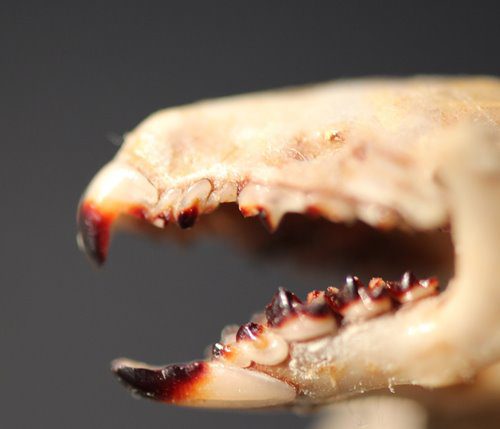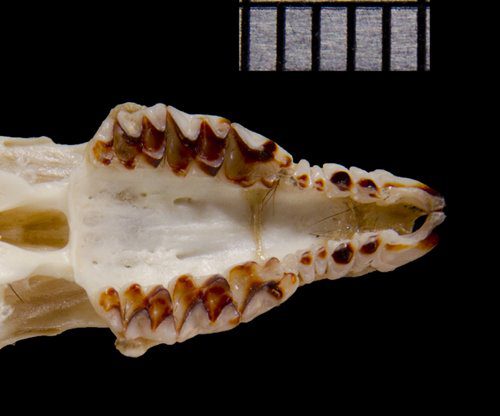
We’ve already talked a bit about the weird world of shrews in the last Freak of the Week blog post, and noted how they eat approximately their entire body weight in food every single day. Shrews have such a high metabolism that they need to eat almost constantly. Most will starve to death if denied food for even half a day! The heart rate of one species, the Masked Shrew, has been recorded at 800 beats a minute, faster than that of the hummingbird.
Anyway, like most mammals shrews have two sets of teeth during their life, a deciduous set (often called “baby teeth”) which are replaced by a permanent set of teeth. However shrews, being the oddballs that they are, lose their deciduous teeth while still in utero and thus are born with a full set of permanent teeth! So not only are they voracious eaters but they only have one set of useable teeth for their entire eating life. If their teeth wear down to the point of being inefficient for chewing, they would then starve to death. So the shrews’ solution to this problem is make the teeth as strong as possible, and they do this by incorporating iron into the cusps of the teeth. This is seen in the dark reddish coloration on the teeth.

Photo by Phil Myers
Surprisingly, studies have shown that the pigmented enamel on shrew’s teeth is not really harder than the non-pigmented enamel, but it is more wear-resistant. Also, the non-pigmented enamel will also wear down more quickly than the enamel with iron in it, thus sharp edges are created where the two meet. This is also seen in rodent incisors, where the pigmented enamel on the front of the incisors wears less quickly then the softer dentine behind it resulting in a sharp chisel-like tooth. Remember that one species of rodent, the beaver, can cut down trees with it’s incisors! The studies on shrews show that the iron density is the highest on the teeth, and parts of teeth, that are the most prone to fracture and excessive wear.
Reference: “Elemental analysis of Soricine enamel: pigmentation variation and distribution in molars of Blarina brevicauda. S.G. Strait & S. Smith, Jour. of Mammalogy, 87(4):700-705, 2006.